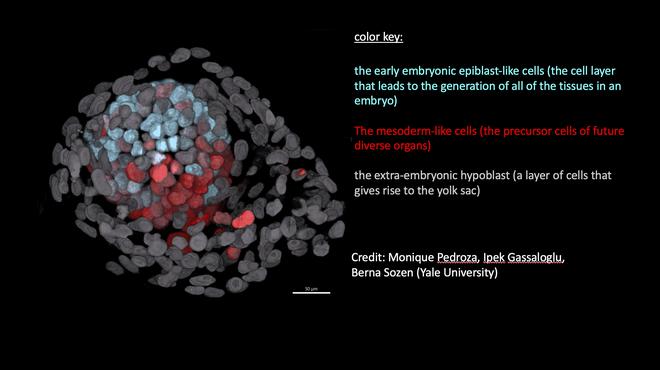A model of the human embryo derived from stem cells has been created in the lab, a breakthrough that scientists say could help understand early human development and why and how some pregnancies fail.
Derived from pluripotent stem cells, or stem cells able to develop into various different cell types, this embryo model is an organised three-dimensional structure replicating some of the early human embryonal developmental processes, the research from Cambridge University, UK, said.
Such models, allowing experimental modelling of embryonic development during the second week of pregnancy, could also help researchers understand the developmental origins of organs and specialised cells such as sperm and eggs, the study published in the journal Nature said.
The second week of pregnancy in humans is when the embryo implants into the uterus. However, this is also the time when many pregnancies are lost.
"Our human embryo-like model, created entirely from human stem cells, gives us access to the developing structure at a stage that is normally hidden from us due to the implantation of the tiny embryo into the mother's womb," said Magdalena Zernicka-Goetz, professor in the Department of Physiology, Development and Neuroscience at Cambridge, who led the work.
Understanding these early developmental processes holds the potential to reveal some of the causes of human birth defects and diseases, and to develop tests for these in pregnant women, the study said.
Until now, the processes could only be observed in animal models, using cells from zebrafish and mice, for example.
"This exciting development allows us to manipulate genes to understand their developmental roles in a model system. This will let us test the function of specific factors, which is difficult to do in the natural embryo," said Zernicka-Goetz.

Scientists so far have only been able to study the period of early human development using donated human embryos. This advance could reduce the need for donated human embryos in research.
Zernicka-Goetz said the while these models can mimic aspects of the development of human embryos, they cannot and will not develop to the equivalent of postnatal stage humans.
The new models derived from human stem cells do not have a brain or beating heart, but they include cells that would typically go on to form the embryo, placenta and yolk sac, and develop to form the precursors of germ cells, that will form sperm and eggs.
Many pregnancies fail at the point when these three types of cells orchestrate implantation into the uterus and begin to send mechanical and chemical signals to each other, which tell the embryo how to develop properly.







